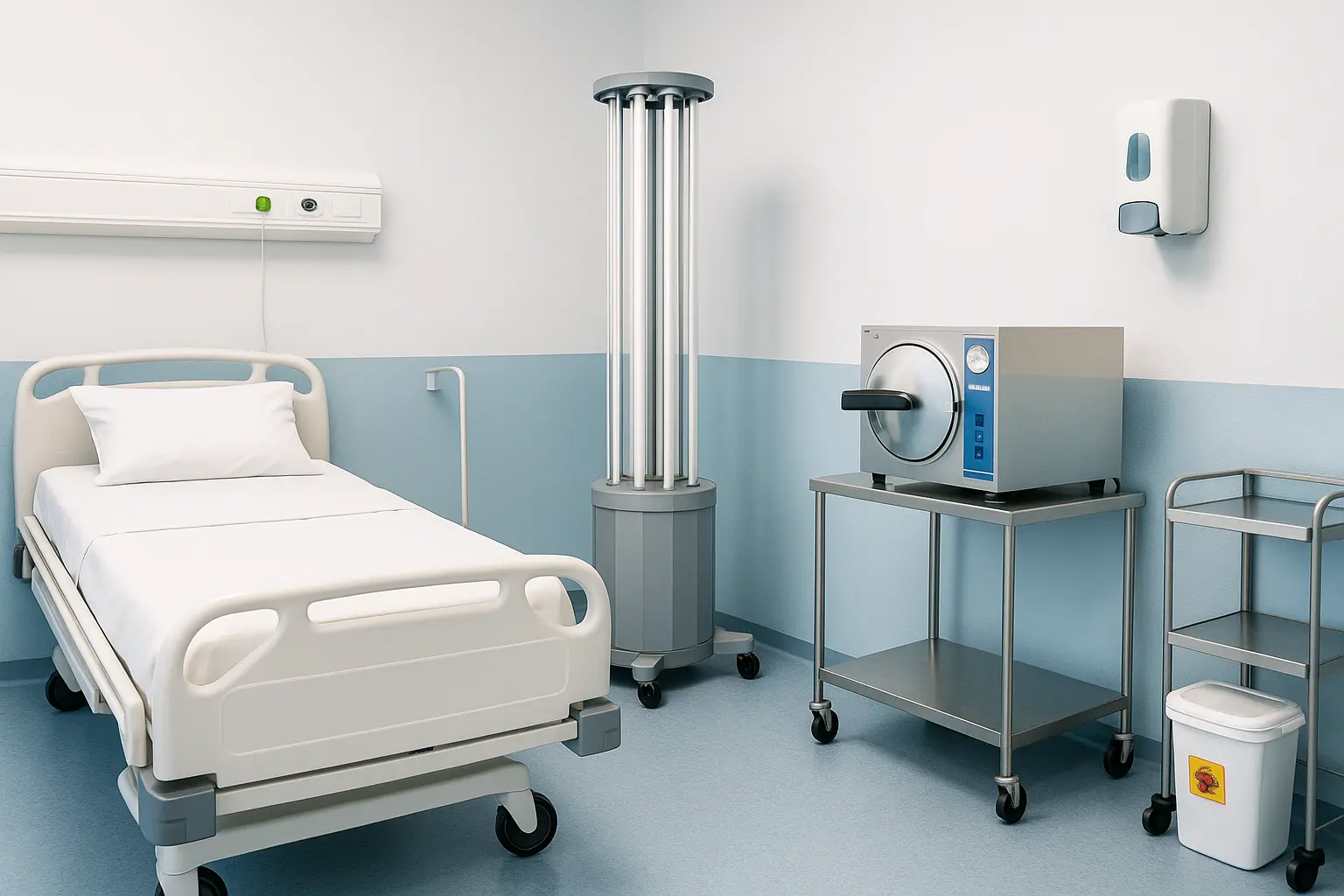Essential Infection Control Equipment Every Medical Facility Should Have

Preventing healthcare-associated infections (HAIs) is a core responsibility of every medical facility. Infection control not only ensures patient safety but also protects healthcare workers and maintains public trust. In this article, we cover the essential infection control equipment your hospital or clinic should implement to reduce the risk of disease transmission and maintain a safe care environment.
⸻
1. Autoclaves and Sterilizers
Autoclaves use high-pressure steam to kill bacteria, viruses, fungi, and spores. They’re vital for sterilizing surgical tools, dressings, and reusable equipment.
Tip: Look for models with programmable cycles, temperature indicators, and safety locks.
⸻
2. UV Disinfection Systems
UV-C light technology offers a chemical-free way to disinfect rooms, tools, and surfaces. Portable UV disinfection towers and ceiling-mounted systems are widely used in ICUs and ORs.
Benefits: Effective against bacteria, viruses (including coronaviruses), and fungi.
⸻
3. Air Purifiers with HEPA Filters
Airborne pathogens are a major source of infection spread. HEPA-equipped purifiers remove 99.97% of airborne particles as small as 0.3 microns.
Ideal Locations: Isolation rooms, surgical suites, and outpatient clinics.
⸻
4. Touch-Free Hand Sanitizer Dispensers
Hand hygiene is the frontline defense. Automated dispensers reduce the chance of cross-contamination compared to manual models.
Pro Tip: Place them at entrances, nurse stations, and patient rooms.
⸻
5. PPE Storage and Dispensers
Organized personal protective equipment (PPE) stations help ensure availability and compliance. Wall-mounted units for masks, gloves, gowns, and face shields promote hygiene discipline.
⸻
6. Antimicrobial Surface Coatings
Some facilities now use antimicrobial paint and surface coatings on high-touch areas like door handles, railings, and bedframes to limit microbe survival.
Note: These should complement—not replace—routine cleaning protocols.
⸻
7. Disposable Barrier Covers
Used on equipment surfaces (like ultrasound probes or blood pressure cuffs) to prevent contact transmission. Always use FDA-approved, latex-free covers.
⸻
8. Medical Waste Disposal Units
Sharps containers, red biohazard bags, and closed-lid waste bins are essential to safely dispose of contaminated materials and avoid exposure.
Requirement: Must be color-coded and comply with OSHA standards.
⸻
9. Cleaning & Disinfection Trolleys
Equipped with color-coded mops, microfiber cloths, and EPA-approved disinfectants, these carts streamline regular disinfection procedures and prevent cross-contamination.
⸻
10. Staff Training Tools & Protocol Systems
Even the best equipment is ineffective without proper use. Interactive training platforms, posters, and digital SOP systems promote awareness and reinforce proper hygiene behavior.
⸻
Conclusion
From autoclaves to HEPA filters and sanitizer dispensers, infection control equipment forms the foundation of a safe healthcare environment. Facilities that invest in reliable hygiene solutions not only meet compliance standards but also build patient trust and reduce operational risks.


